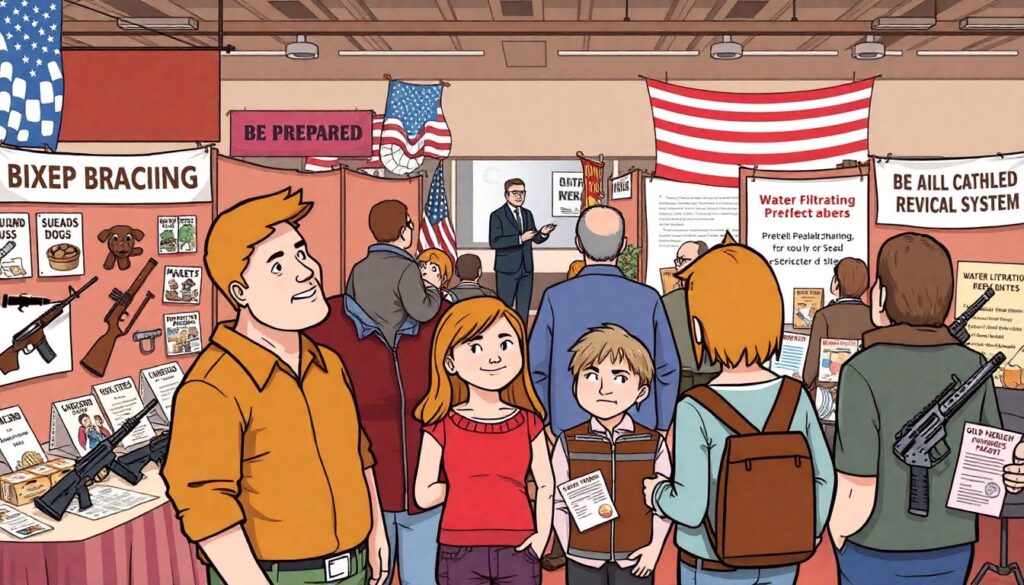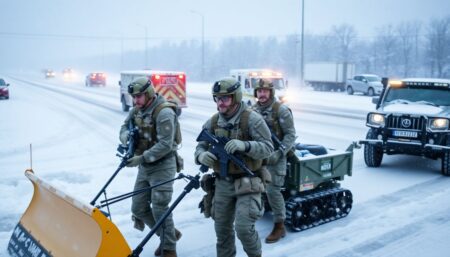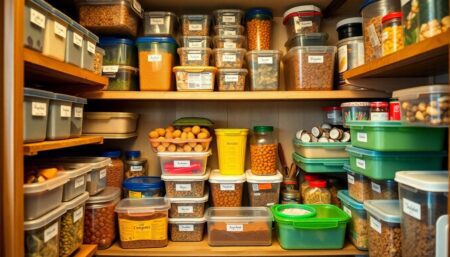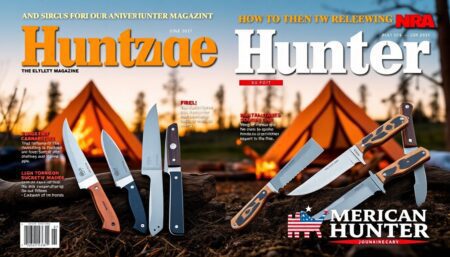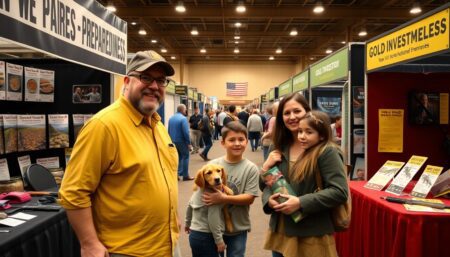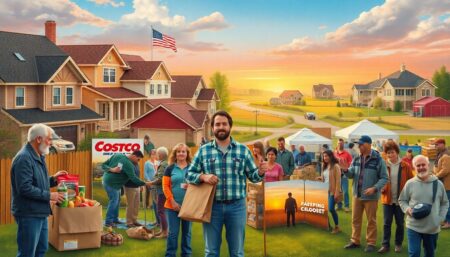Delve into the fascinating world of doomsday prepping in America, where self-reliance and preparedness are not just hobbies, but a way of life. From the aisles of Costco to the bustling Be Prepared Expo, this article explores the logic behind prepping and its deep roots in American culture.
Why Prepping for Doomsday is a Logical Choice for Many Americans
Imagine yourself in the heart of a bustling convention center, the air buzzing with a mix of excitement and apprehension. You’ve just stepped into the Be Prepared Expo, and your eyes widen as you take in the spectacle of a typical American family—mom, dad, two kids, and even the family dog—navigating a labyrinth of booths designed to cater to every conceivable need in a world turned upside down. Survival seeds promising lush gardens in a post-apocalyptic world, guard dogs bred to be humanity’s best friend in the toughest times, and weapons gleaming under harsh fluorescent lights, each a stark reminder of the uncertainties that lurk in the shadows of our collective consciousness.
As you meander through the aisles, you can’t help but notice the stacks of gold-hoarding pamphlets, their gilded letters shimmering with promises of financial security when all else fails. The air is thick with a sense of urgency, a palpable need to be ready for whatever might come our way. It’s a microcosm of America’s deep-seated spirit of self-reliance, a testament to our desire to protect and provide for our loved ones, no matter what.
In the background, a steady hum of conversation is punctuated by the amplified voice of a speaker, his words echoing through the cavernous space. He’s lecturing about water filtration systems, his tone serious, his message clear: clean water is life’s most precious commodity. Around you, heads nod in agreement, clipboards fill with hurried notes, and families exchange determined glances. This is not a gathering of doomsday preppers, but of ordinary folks seeking peace of mind in a world that seems to spin ever faster on its axis. Welcome to the Be Prepared Expo, where hope and caution intertwine, and the American spirit of resilience is alive and well.
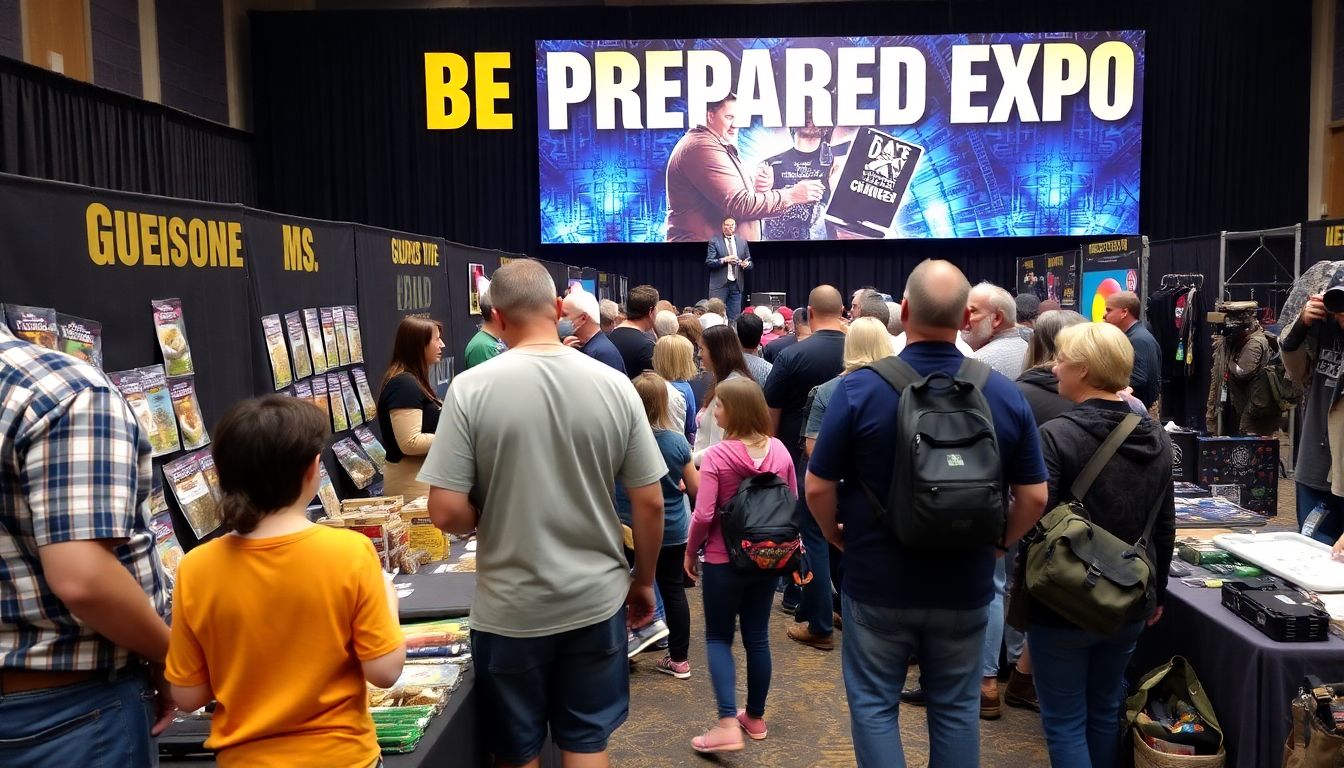
The Be Prepared Expo
Step into the Be Prepared Expo and you’re immediately swept up in a whirlwind of activity and chatter. The sprawling convention center is a beehive of families, friends, and neighbors, all united by a shared goal: to be ready for whatever comes their way. The air is filled with a palpable sense of community and self-reliance, a testament to the power of preparation.
The expo floor is a labyrinth of booths, each one a treasure trove of information and supplies. There’s the Red Cross station, where volunteers demonstrate CPR techniques on mannequins surrounded by eager learners. Next door, the local fire department shows off their gleaming trucks and offers tips on fire safety. Across the aisle, the amateur radio club is helping visitors set up their own ham radios, while the gardening society is handing out seedlings and offering green-thumbed advice on growing your own food.
But the Be Prepared Expo is more than just a marketplace for supplies and skills. It’s a forum for ideas and discussions. In one corner, a panel of experts is deep in discussion about emergency planning, fielding questions from the audience. Nearby, a workshop on water purification is underway, with participants eagerly taking notes. Meanwhile, in the main conference hall, a keynote speaker captivates the crowd with tales of resilience and survival, their voice echoing with passion and determination.
As you make your way through the expo, you can’t help but notice the underlying sense of camaraderie. Strangers swap stories of past disasters and lessons learned. Neighbors exchange phone numbers and promise to look out for each other. Children watch wide-eyed as search and rescue dogs demonstrate their skills. It’s a vibrant tapestry of community and shared purpose, a reminder that in the face of uncertainty, we’re all in this together. As you leave the Be Prepared Expo, you carry with you more than just a bag of supplies and a head full of knowledge. You carry the comforting knowledge that you’re part of a community, a tribe of self-reliant individuals ready to face whatever comes next.
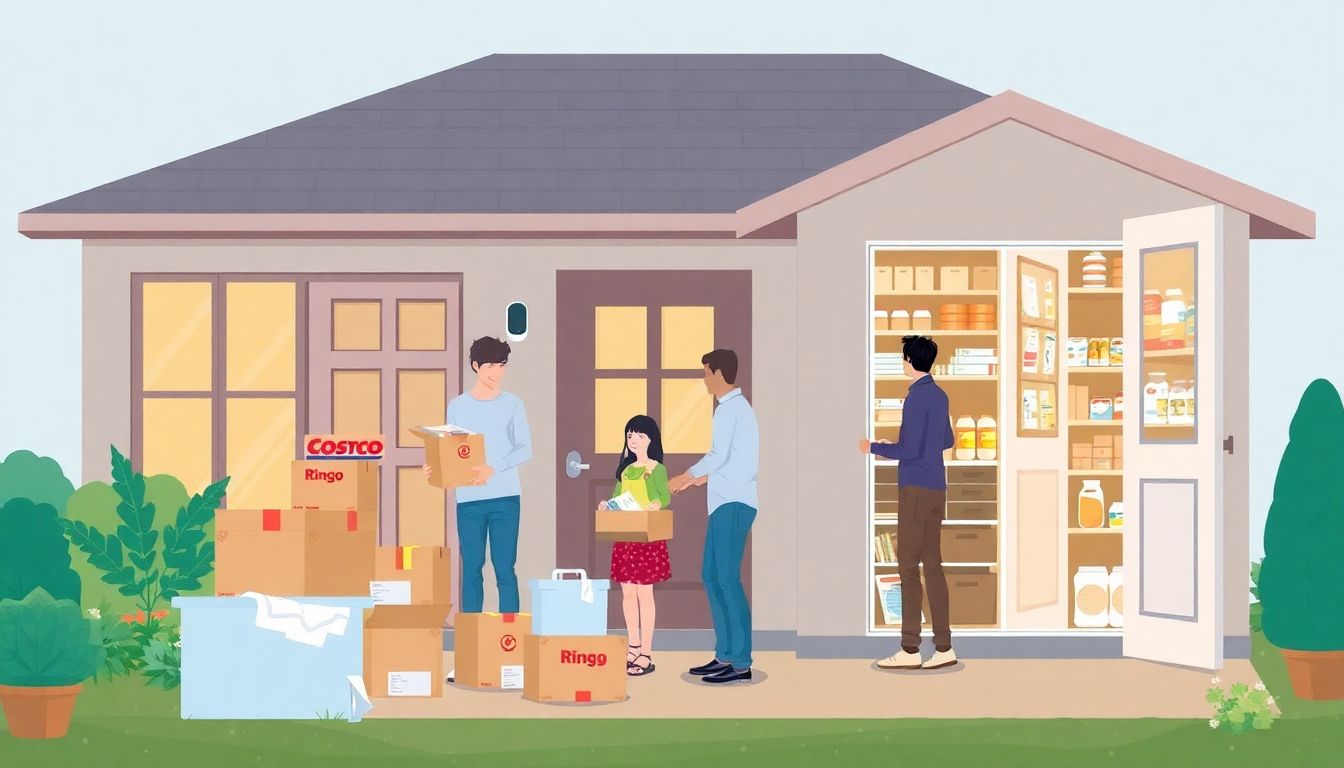
Prepping in the Suburbs
In the heart of suburbia, the Johnson family has seamlessly integrated prepping into their daily routine. It all starts with their weekly trip to Costco. While many might see it as a simple bulk shopping expedition, the Johnsons have a strategic plan. They focus on stocking up on non-perishable items, such as canned goods, dried fruits, and grains, ensuring their pantry is always prepared for any eventuality. Additionally, they prioritize essentials like bottled water, batteries, and first aid supplies, turning their shopping list into a vital component of their prepping strategy.
Beyond their grocery list, the Johnsons have taken significant steps to enhance their home security. They’ve installed a state-of-the-art home security system complete with motion sensors, cameras, and a robust alarm system. This not only provides peace of mind but also serves as a deterrent to potential intruders. Furthermore, they’ve invested in reinforced doors and windows, ensuring their home is a fortress of safety. Regular drills and safety meetings are also part of their routine, making sure every family member knows what to do in case of an emergency.
The Johnson family also maintains a well-stocked emergency provisions kit. This kit includes essentials like flashlights, batteries, a portable radio, and a comprehensive first aid kit. They also keep a supply of emergency food and water, enough to last for at least 72 hours. Regular checks and rotations ensure that nothing expires or goes unused.
Lastly, the Johnsons have made prepping a family affair. They involve their children in the process, teaching them valuable life skills and the importance of being prepared. This includes activities like:
- Planning and maintaining a family garden to ensure a steady supply of fresh produce
- Learning basic survival skills, such as starting a fire and navigating with a map and compass
- Regularly reviewing and updating their emergency plan
By incorporating these elements into their daily lives, the Johnsons have turned prepping into a lifestyle that not only keeps them safe but also brings them closer together as a family.
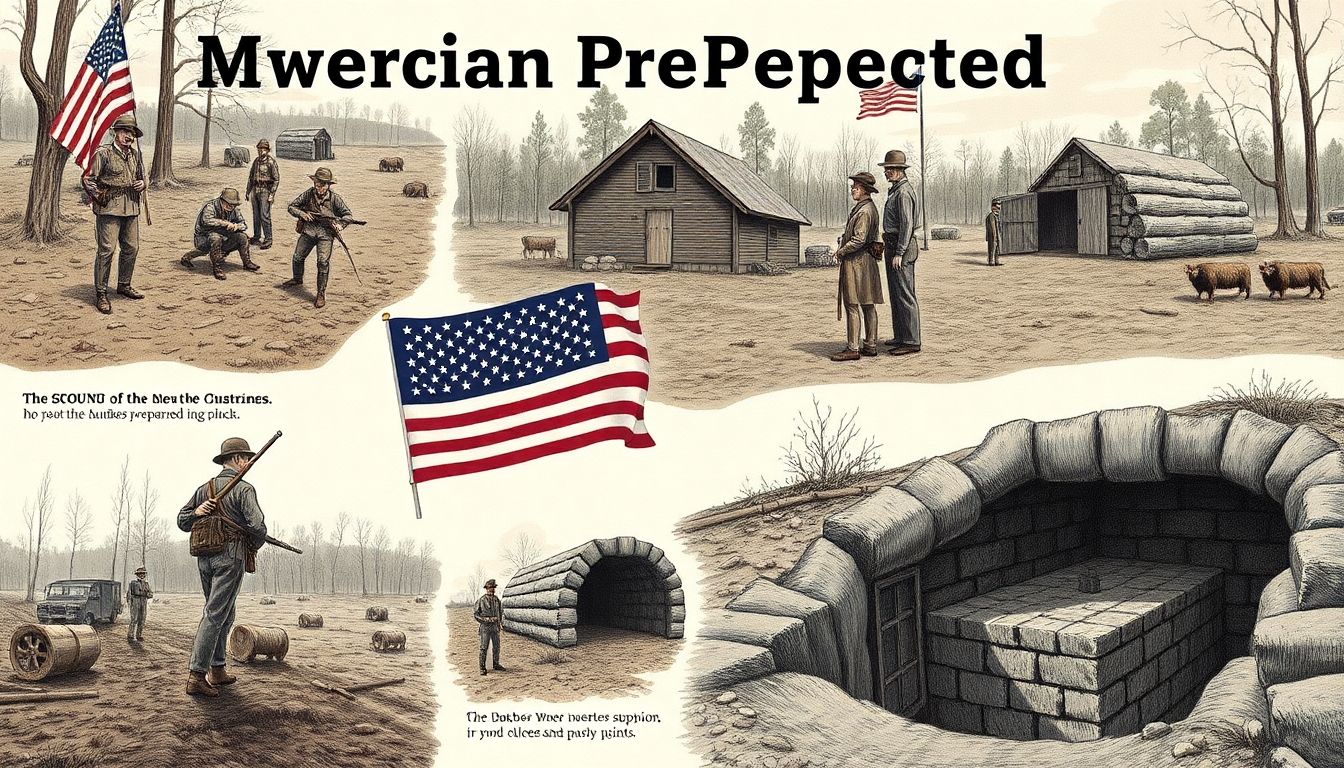
The Roots of Prepping in America
Prepping in the United States has a rich historical context that dates back to the early 20th century. One of the first organized forms of preparedness came with the advent of scouting organizations. Groups like the Boy Scouts of America, established in 1910, taught young people essential survival skills, such as first aid, navigation, and camping. These organizations instilled a sense of self-reliance and preparedness in generations of Americans. Concurrently, the Homestead Movement, which peaked in the late 19th and early 20th centuries, saw families moving westward to settle on new lands. These pioneers had to be self-sufficient, growing their own food, building their own homes, and managing their own resources, all skills that would become foundational to the modern prepping movement.
The mid-20th century brought the Cold War era, which significantly escalated the concept of prepping. The threat of nuclear war led the government to encourage citizens to build backyard fallout shelters and stockpile supplies. This period saw the introduction of the first modern survival foods, like freeze-dried rations, and the popularization of survival skills training. Civil defense programs taught citizens how to respond to a nuclear attack, further ingraining a culture of preparedness. This era also saw the birth of survivalism, a movement that encouraged individuals to actively prepare for potential catastrophes, including nuclear war, economic collapse, and environmental disasters.
As the Cold War waned, the focus of prepping shifted. The 1970s and 1980s saw a rise in environmental awareness, which broadened the prepping movement to include sustainable living and self-sufficiency. Books like “The Foxfire Book” series popularized traditional pioneering skills, while the back-to-the-land movement encouraged urbanites to relocate to rural areas and adopt homesteading lifestyles. During this period, prepping evolved to encompass:
- Alternative energy sources, such as solar and wind power
- Organic gardening and sustainable agriculture
- DIY skills and home-based industries
Today, the modern prepping movement is a synthesis of these historical influences. Preppers now focus on a wide range of potential challenges, from natural disasters to economic uncertainty and cyber threats. The movement has been further popularized by reality TV shows, blogs, and online forums, which share information and build communities around preparedness. Modern prepping encourages individuals to:
- Store emergency supplies, including food, water, and medical provisions
- Develop survival skills, such as self-defense, first aid, and wilderness navigation
- Create contingency plans for various emergency scenarios
- Build networks and communities to share knowledge and resources
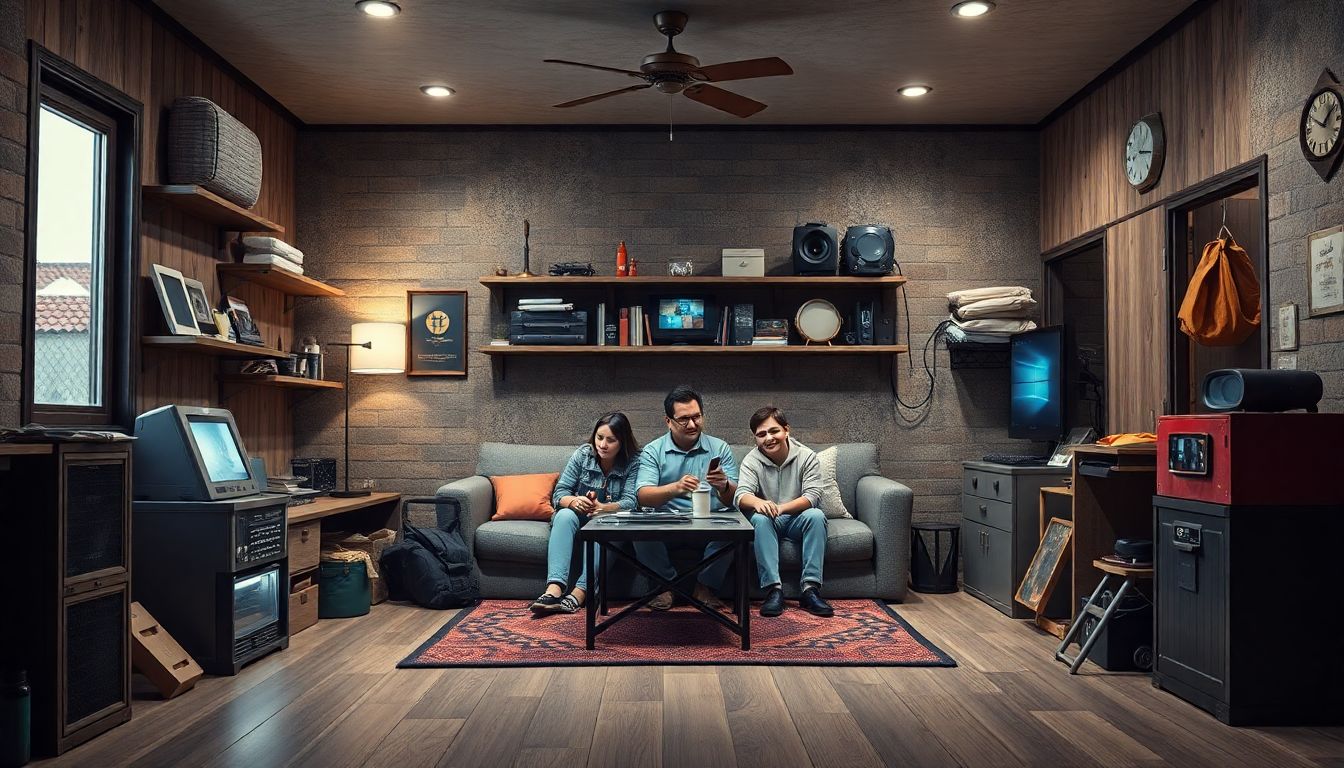
The Logic of Bunkerisation
In the heart of America, a phenomenon known as bunkerisation has taken root, transforming the once- dismissed prepping movement into a mainstream culture deeply intertwined with the nation’s mythology and consumerism.
Bunkerisation refers to the act of creating secure, self-sufficient shelters, often underground, designed to protect individuals and their families from various doomsday scenarios. This concept has evolved from the simple backyard fallout shelters of the Cold War era to lavish, high-tech bunkers complete with luxury amenities. This shift has been fueled by a combination of factors, including the media’s glamorization, celebrity endorsements, and, above all, the deeply ingrained American ideal of self-reliance and rugged individualism.
The mainstreaming of prepping can be attributed to several key factors:
- Reality TV and Media Portrayal: Shows like ‘Doomsday Preppers’ have brought prepping into the limelight, presenting it as an almost aspirational lifestyle rather than a fringe activity.
- Celebrity Endorsements: High-profile figures openly discussing their own preparations have further normalized the idea.
- Political Uncertainty and Natural Disasters: Recent events, from political unrest to devastating natural disasters, have made the idea of prepping seem more sensible and less paranoid to the average citizen.
Moreover, consumer culture has embraced and fueled this trend. Companies now specialize in high-end bunkers, complete with state-of-the-art technology, years’ worth of food supplies, and even luxury amenities like pools and gyms. This has turned prepping into a multi-million-dollar industry, offering everything from affordable emergency kits to extravagant underground homes. The American dream, it seems, has expanded to include the dream of ultimate security and self-sufficiency, even in the face of apocalyptic scenarios.



